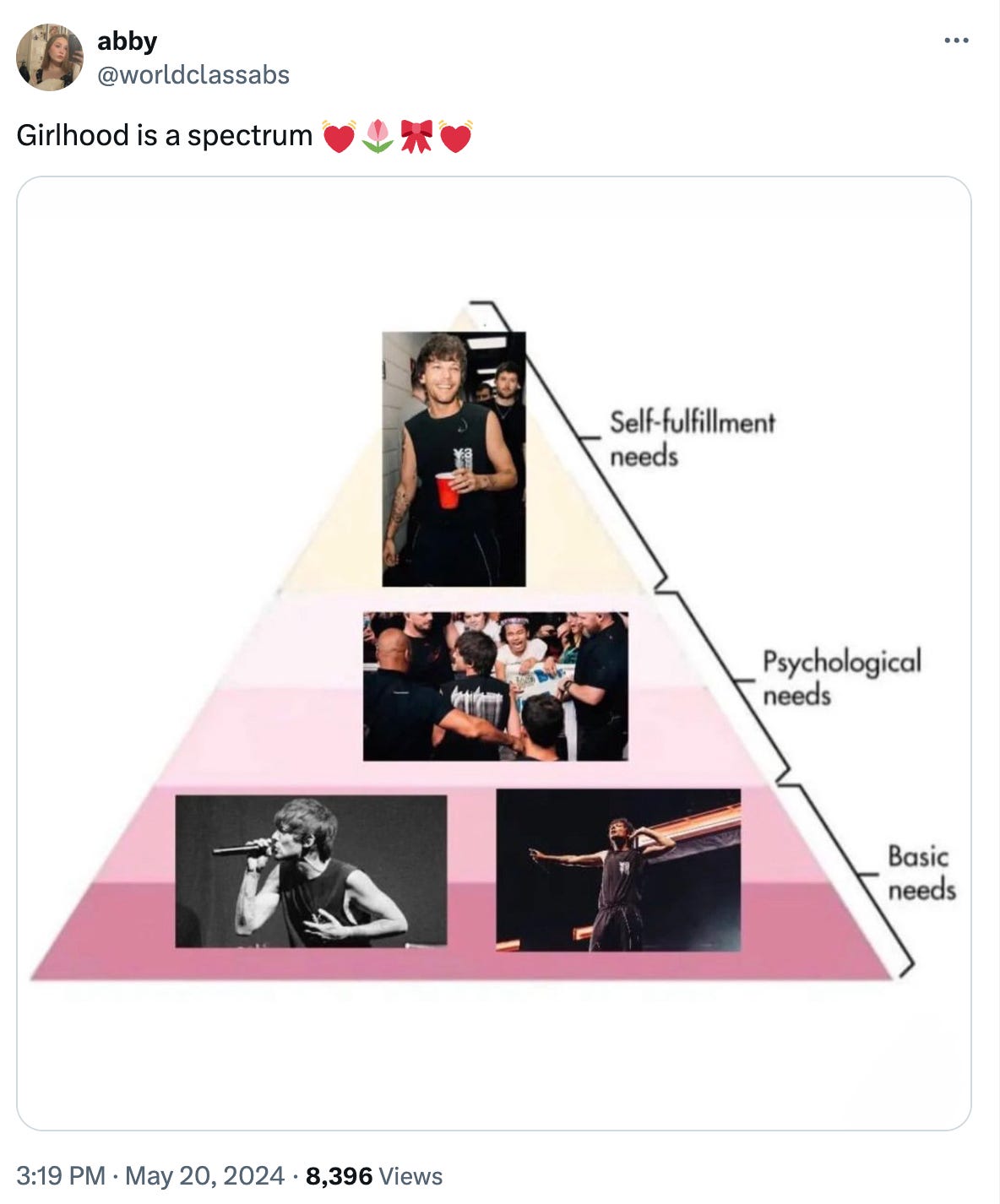It’s time for a special edition of the newsletter where I highlight a trending meme. If you’re new, you can subscribe here and follow me on Threads, Instagram, or X. Views are my own. Happy reading!
What is the meme?
Remember coquette memes? Exploring the female experience is so back. Enter: “girlhood is a spectrum.”
What is the meme?
In the most popular version of the meme, two images are set on a spectrum line chart to demonstrate the duality of the female experience. For example, in the image above Zendaya plays a sleazy drug addict and on the left, a desirable all-star tennis player on the right. In the image below, you see a beat up pair of conversion next to shiny, sexy heels. It sometimes references universal feelings, too.
Who is in the meme?
Comparable things, whether that’s actresses, objects, screenshots, or experiences. Some even involve Maslow’s Hierarchy of Needs, like in the example below featuring singer Luis Tomlinson.
When did the meme pop up?
I noticed these around May 26.
Where is the meme?
I’ve been seeing it on Instagram, X, and Facebook.
Why is the meme?
Often girlhood is seen as a trivial, flowery experience. But it comes with a loss of innocence. We see “female rage” here – a push to allow women to express their anger as they come to grips with dark and complicated truths they often need to repress to maintain their composure for society.
Actress Anya Taylor-Joy explained the concept in an interview with GQ. “I’ve developed a bit of a reputation for fighting for feminine rage, which is a strange thing, because I’m not promoting violence — but I am promoting women being seen as people,” she said. “We have reactions that are not always dainty or unmessy.”
Instagram account @filmirly added their thoughts on the meme. “Being a woman is so complex yet so simple. Sometimes people say 'girlhood is this' or 'girlhood is that.' The trope of girlhood being portrayed right now is so narrow. Being a girl does not limit itself to a single set of characteristics or behaviors; it's about embracing all sorts of experiences, identities, and expressions.”














